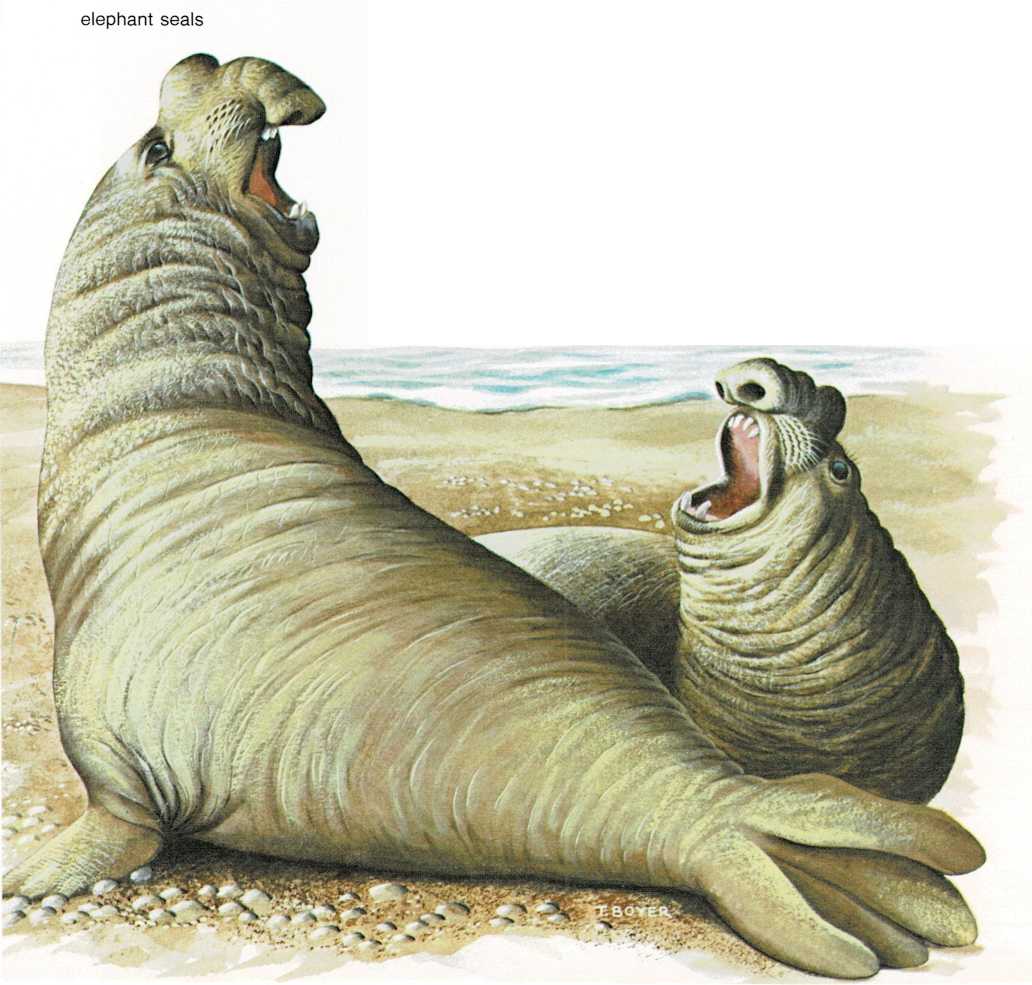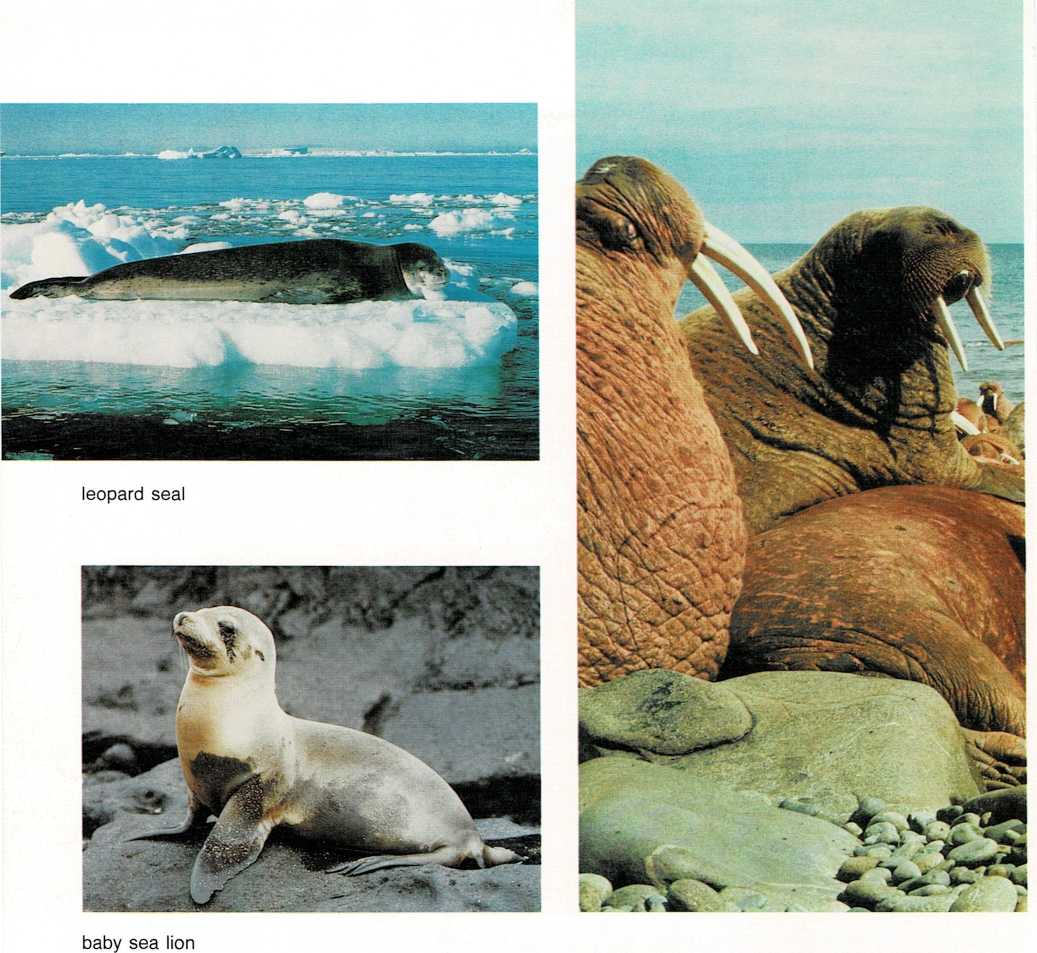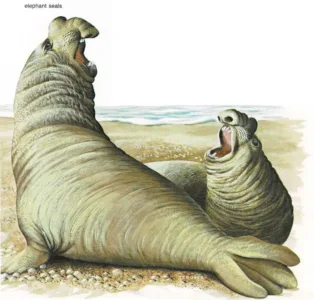The “fin-footed” ones
It was September, and the beginning of spring in the southern part of
the world. Near a small island in the Antarctic Ocean, the water was
filled with bobbing brown heads. Hundreds of animals were swimming
toward the island’s flat, sandy beach.
The first of the animals to reach the beach
dragged itself ashore with many groaning sounds. It was an immense
animal, sometwenty feet (6 meters) long. Its bulky body

must have weighed nearly eight thousand pounds (3,600 kilograms).
The animal pulled itself over the sand with a pair of thick, front
flippers. The back part of its body ended in a pair of joined flippers,
which dragged along the ground. It had a round head, with a long,
curved, trunklike nose. The animal was a male elephant seal.
More and more of the big seals flopped up onto the beach. Before long,
fighting broke out. Each male wanted his own territory, or space, on the
beach. The only way to keep it was to drive every challenger away. The
animals bumped their big bodies together, biting savagely. Finally one
would give up and flop away to seek another place.
Later that month, the female elephant seals joined the males on the
island. Each male then rounded up as many females as he could, herding
them into his territory.
Seals, sea lions, and walruses belong to the same \”family” of seagoing
mammals. All these animals are called pinnipeds [(pihn]{.smallcaps} uh
pehds), which means \”fin-foot.” And their fins are simply flattened
feet.
These sea mammals are very different from whales, porpoises, and
dolphins. Although they spend much of their time in the water, they are
able to come onto land and waddle about on their fin-feet. Whale and
dolphin babies are born in water, but all pinniped babies are born on
land.
All the pinnipeds live very much the same sort of life. They all eat
only animals. But different kinds of pinnipeds eat different kinds of
animals. Elephant seals, which are the biggest of all pinnipeds, eat
mostly squid and fish, as do many smaller kinds of seals. Some seals eat
mainly tiny shrimp that they strain out of the water, much like baleen
whales do. Leopard seals eat penguins and young seals.
Walruses are large seals. But they are a little different from other
seals in several ways. The biggest difference is that a walrus has long
tusks. The walrus uses its tusks to dig clams

and other shellfish out of the sand, or to pry them off rocks. It then
apparently sucks out the clam’s soft body and spits out the shell.
A walrus also uses its tusks to pull itself out of the water and up onto
the ice. The walrus stretches up out of the water and jams the points of
its tusks into the ice. It then pulls itself forward until it can get
its flippers onto the ice. The bottoms of the flippers are covered with
a rough skin that keeps them from slipping on the slick surface.

walruses
Seals can be found in many parts of the world. Some kinds live where the
climate is warm, such as near the Hawaiian Islands. Others live in the
cold water near the North Pole or the South Pole. Walruses all live in
the Far North.
Pinnipeds have several enemies, such as sharks and killer whales. But
their worst enemy is people. These animals have been hunted until there
are very few left. Some kinds of seals have been killed off altogether.

